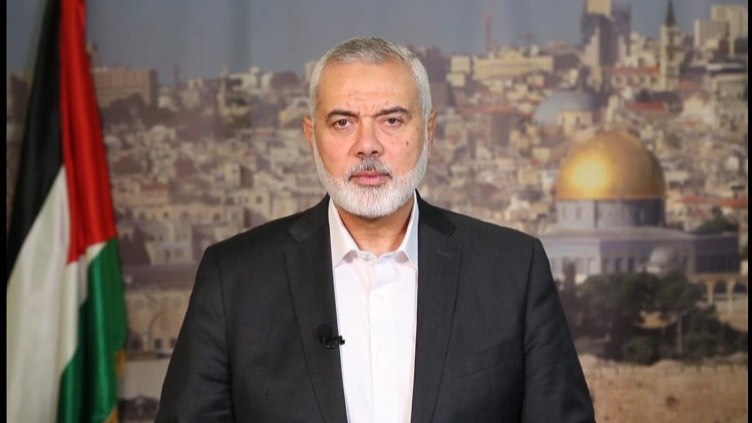Hamas’ top leader traveled to Cairo on Wednesday for talks on the war in Gaza, part of a flurry of diplomacy aimed at securing another cease-fire and hostage swap at a moment when the militant group is putting up stiff resistance to Israel’s offensive.
Ismail Haniyeh’s visit came a day after Hamas fired rockets that set off air raid sirens in central Israel, a show of strength during a 10-week war that has devastated much of northern Gaza, killed nearly 20,000 Palestinians, and driven some 1.9 million — nearly 85% of the population — from their homes.
Quick Read
- Hamas Leader’s Cairo Visit: Hamas’ top leader, Ismail Haniyeh, traveled to Cairo for discussions on the ongoing war in Gaza. This visit signals active diplomatic efforts to secure a cease-fire and a potential hostage swap.
- Impact of the War: The 10-week war has caused significant devastation in northern Gaza, with nearly 20,000 Palestinians killed and approximately 1.9 million people displaced.
- International Perspective: Israel is urging the international community to designate Hamas as a terrorist organization, citing its role in initiating the war with an attack on southern Israel on October 7.
- Indirect Talks: Egypt and Qatar are mediating indirect talks between Israel and Hamas, focusing on establishing a cease-fire and negotiating a hostage swap.
- Communication Challenges in Gaza: Mobile phone and internet services are down in Gaza, complicating communications within the territory, especially among Hamas leaders.
- Challenges in Negotiations: Despite recent diplomatic activities, significant gaps remain between Israel and Hamas, particularly regarding hostage releases and the exchange of Palestinian prisoners.
- Previous Cease-Fire Efforts: A previous weeklong cease-fire mediated by Egypt and Qatar resulted in the release of over 100 hostages by Hamas and 240 Palestinian prisoners by Israel. However, around 129 captives are still held by Hamas and other militant groups.
- Military Operations in Gaza: Israeli Defense Minister Yoav Gallant reported ongoing military operations in northern Gaza, including the “final clearing” of militants. Southern Gaza, particularly Khan Younis, is expected to see extended military operations.
- Death Toll and Responsibility: The Gaza Health Ministry reports over 19,600 deaths since the war’s beginning. Hamas and other militants have killed about 1,200 people, mostly civilians, in their initial attack.
- UN Security Council Resolution: Members of the UN Security Council are negotiating a resolution to halt hostilities in Gaza, with the aim of increasing humanitarian aid. The resolution’s vote has been delayed, with the hope of securing U.S. support or abstention.
- International Responses: France, the UK, Germany, and global protestors are calling for a cease-fire and negotiations for hostage releases. The U.S. supports Israel’s right to self-defense while urging greater care to spare civilian lives.
The Associated Press has the story:
Hamas leader visits Cairo, a sign talks on another Gaza truce, hostage swap are gathering pace
Newslooks- DEIR AL-BALAH, Gaza Strip (AP)
Hamas’ top leader traveled to Cairo on Wednesday for talks on the war in Gaza, part of a flurry of diplomacy aimed at securing another cease-fire and hostage swap at a moment when the militant group is putting up stiff resistance to Israel’s offensive.
Ismail Haniyeh’s visit came a day after Hamas fired rockets that set off air raid sirens in central Israel, a show of strength during a 10-week war that has devastated much of northern Gaza, killed nearly 20,000 Palestinians, and driven some 1.9 million — nearly 85% of the population — from their homes.
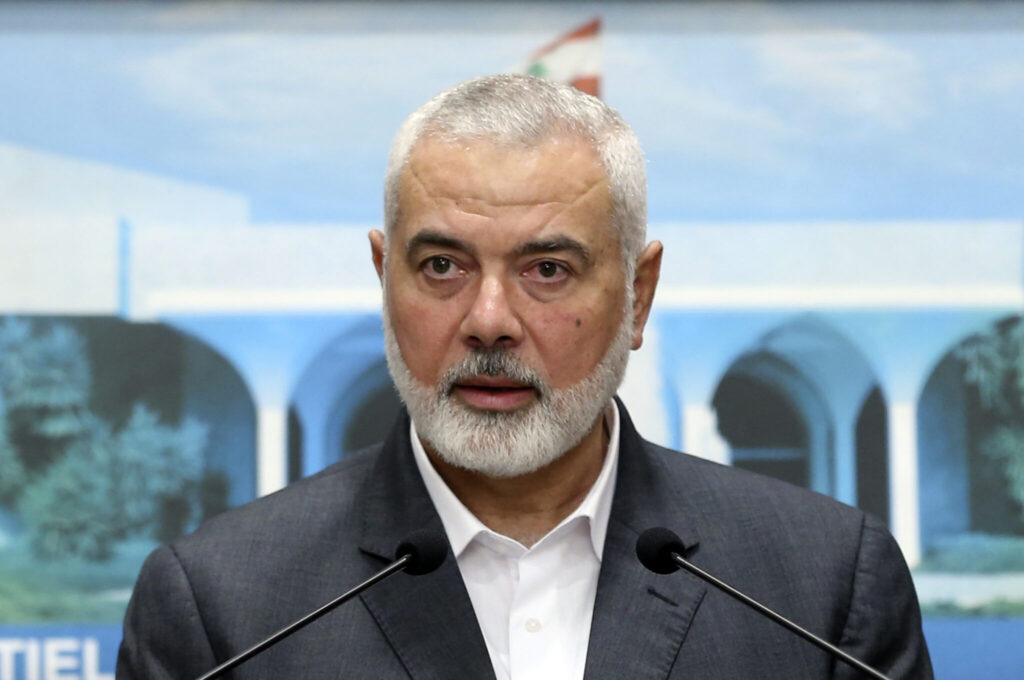
Israel has called on the rest of the world to blacklist Hamas as a terrorist organization, saying it must be eradicated in the wake of its Oct. 7 rampage across southern Israel that triggered the war.
But the sides have recently relaunched indirect talks, mediated by Egypt and Qatar, aimed at instituting another cease-fire and freeing more hostages captured in that attack in exchange for Palestinians imprisoned by Israel.
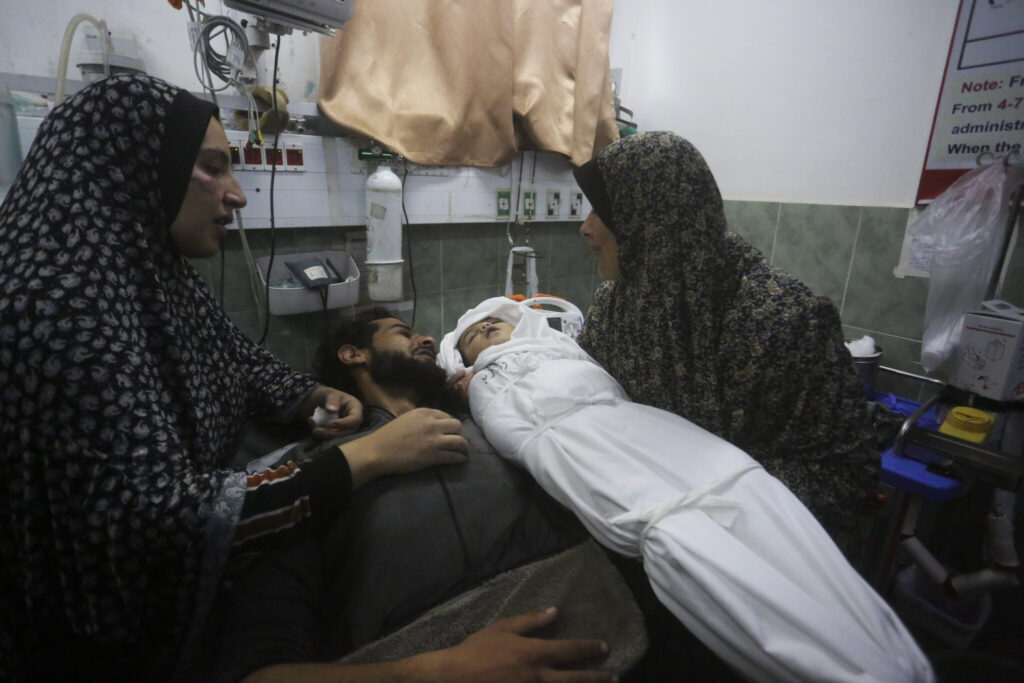
Mobile phone and internet service was down across Gaza again on Wednesday, an outage that could complicate efforts to communicate with Hamas’ leaders inside the territory who went into hiding after Oct. 7.
WIDE GAP REMAINS IN TALKS ON HOSTAGES
Despite a burst of activity by high-level officials in recent days, the two sides appeared to be far from an agreement.
Hamas has said no more hostages will be released until the war ends, and is expected to insist on the release of large numbers of Palestinian prisoners, including high-level militants, for the captives that remain — demands Israel has thus far rejected.
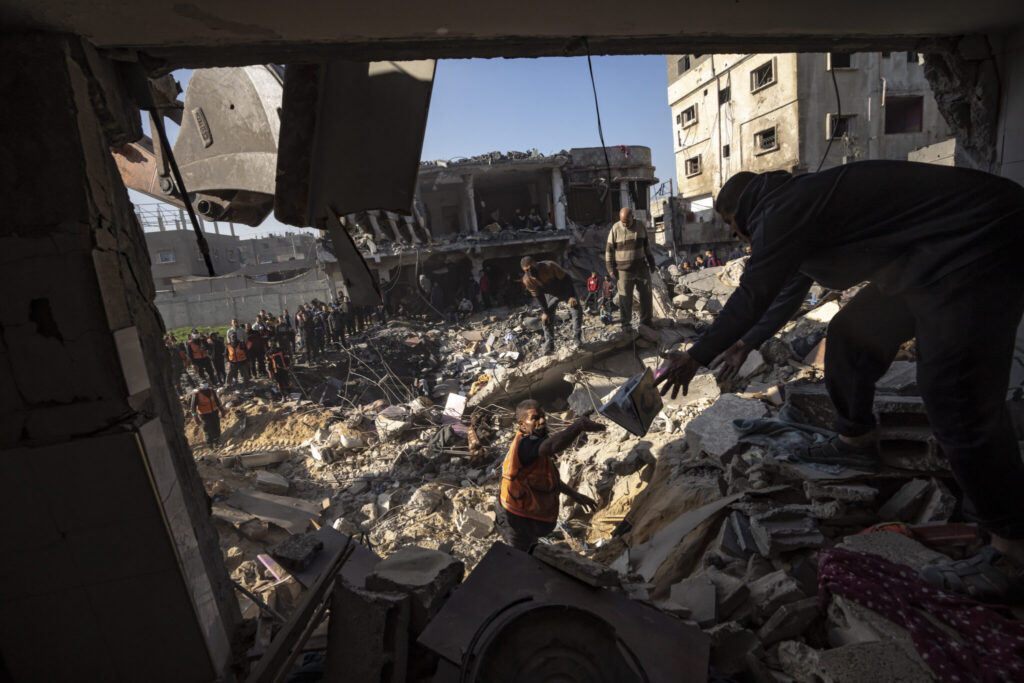
Egypt, along with Qatar, helped mediate a weeklong cease-fire in November in which Hamas freed over 100 hostages in exchange for Israel’s release of 240 Palestinian prisoners. Hamas and other militants are still holding an estimated 129 captives.
Hamas said that Haniyeh — who is believed to be based in Qatar but whose movements are rarely publicized — would discuss the war with Egyptian officials, without providing more details. Egypt, which borders Gaza, is deeply concerned about a potential influx of Palestinian refugees, fearing Israel will not allow them to return.
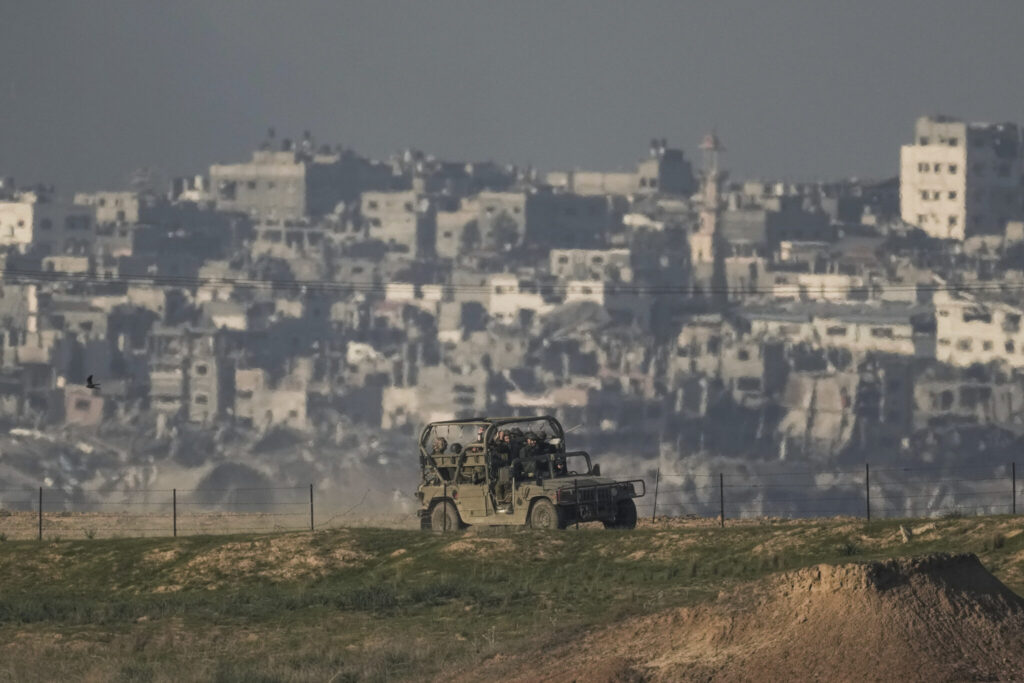
ISRAEL SAYS ‘FINAL CLEARING’ UNDERWAY IN THE NORTH
At least 46 people were killed and more than 100 wounded early Wednesday as Israel continued to bombard the urban Jabaliya refugee camp near Gaza City, according to Munir al-Bursh, a senior Health Ministry official.
In southern Gaza, several women and children were among those brought into Nasser Hospital in the city of Khan Younis after strikes overnight and into Wednesday. A boy could be seen sobbing next to his wounded mother, who was laid out on a stretcher, before being lifted up and placed on her chest.
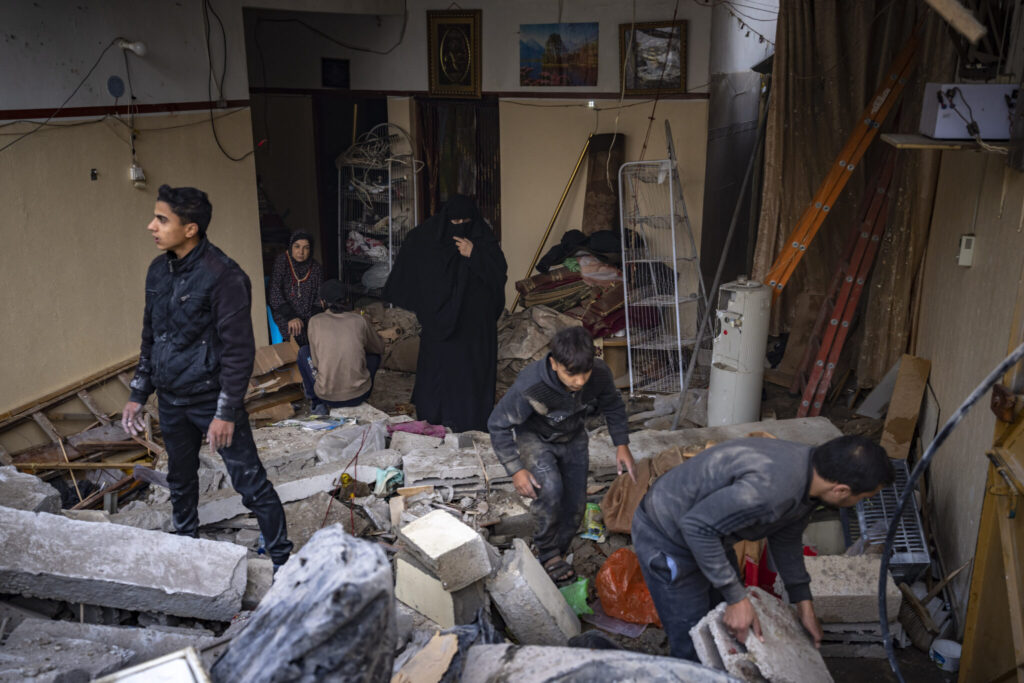
Defense Minister Yoav Gallant said Tuesday that Israeli forces were entering Hamas’ tunnel network in northern Gaza as part of a “final clearing” of militants from the region. The densely built urban north — including Gaza City, the territory’s largest — has seen ferocious fighting, with Palestinian health officials reporting dozens of people killed in bombardment in recent days.
Gallant said that in southern Gaza, where the military launched a ground incursion focused on Khan Younis in early December, operations will take “months.”
The Health Ministry in Hamas-run Gaza said Tuesday the death toll since the start of the war had risen to more than 19,600. It does not distinguish between civilian and combatant deaths.
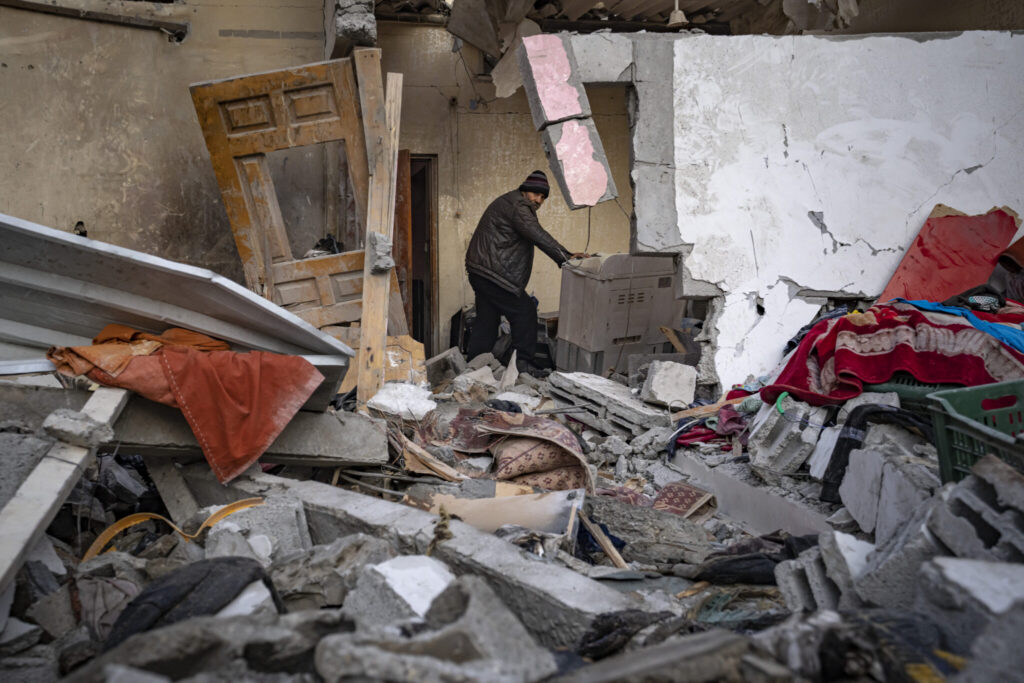
Hamas and other militants killed some 1,200 people, mostly civilians, in the Oct. 7 attack.
Israel’s military says 134 of its soldiers have been killed in the Gaza ground offensive. Israel says it has killed some 7,000 militants, without providing evidence, and blames civilian deaths on Hamas, saying it uses them as human shields when it fights in residential areas.
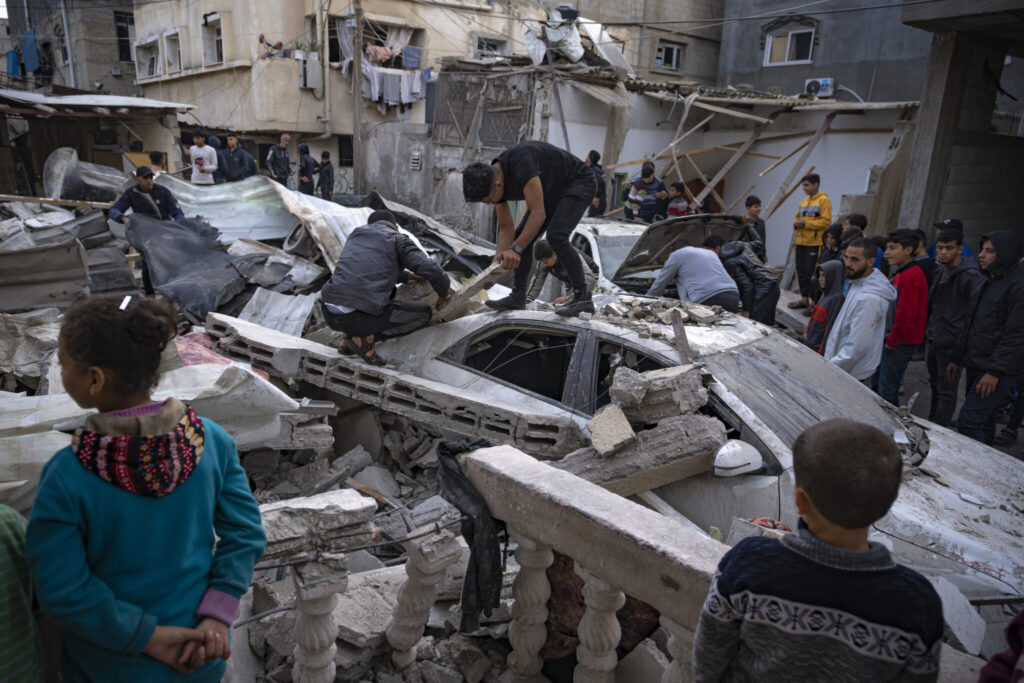
UN MEMBERS STILL PUSHING US ON AID RESOLUTION
U.N. Security Council members are negotiating an Arab-sponsored resolution to halt the fighting in some way to allow for an increase in desperately needed humanitarian aid deliveries to Gaza. A vote on the resolution, first scheduled for Monday, was pushed back again until Wednesday as talks continued in the hopes of getting the U.S. to abstain or vote “yes” on the resolution after it vetoed an earlier cease-fire call.
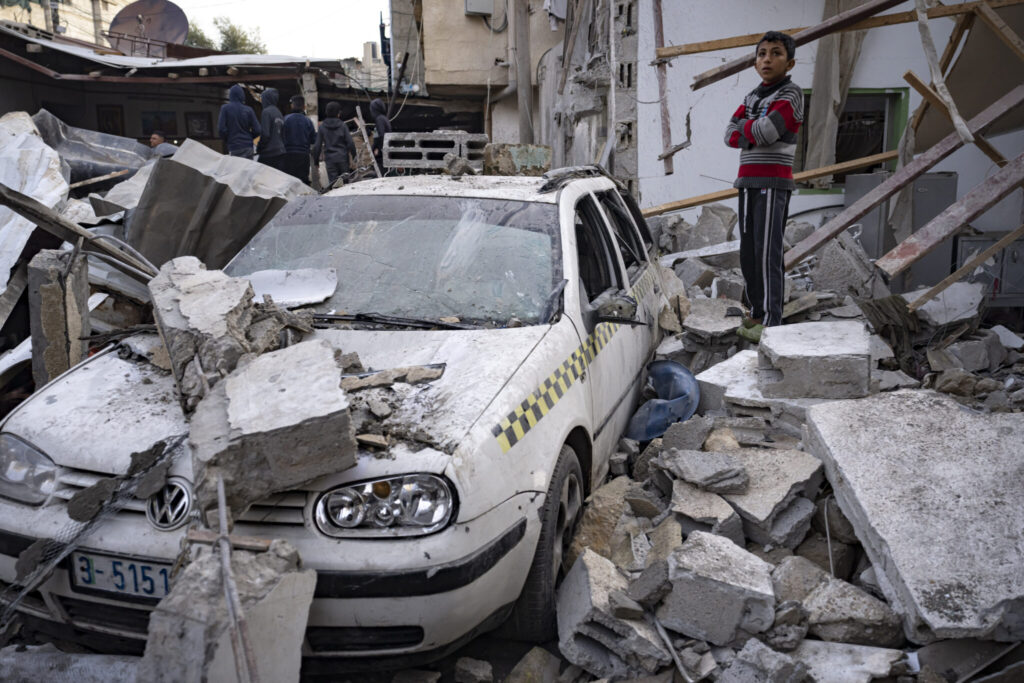
France, the United Kingdom and Germany — some of Israel’s closest allies — joined global calls for a cease-fire over the weekend. In Israel, protesters have called for negotiations with Hamas to facilitate the release of scores of hostages still held by the group.
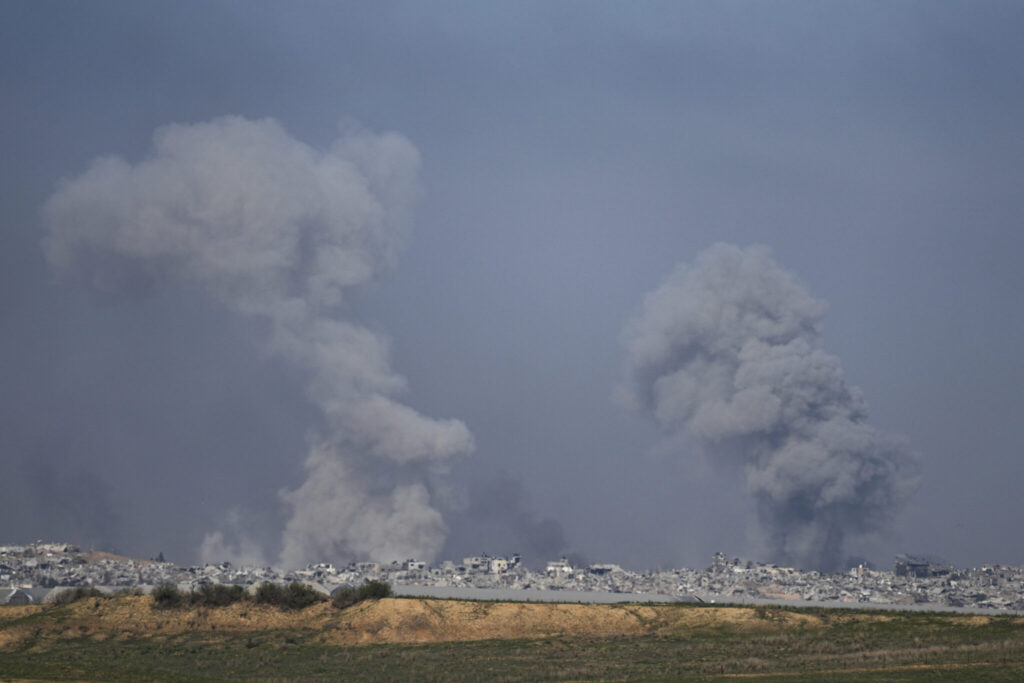
Israel says it will keep fighting until it has removed Hamas from power, dismantled its armed wing and returned all the hostages. U.S. President Joe Biden’s administration has called on Israel to take greater steps to spare civilians but has continued to provide diplomatic and military support for the offensive.

